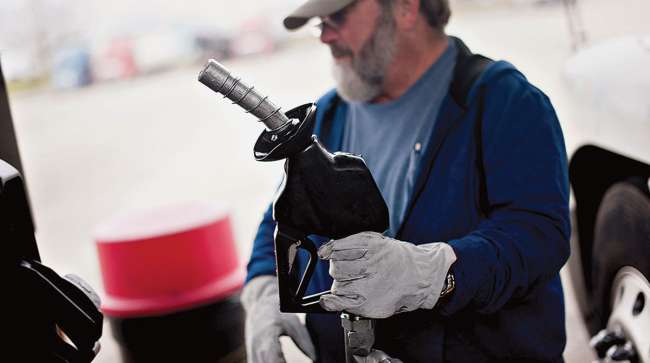Senior Reporter
Diesel Rises 1.6¢, Reaches Nine-Month High of $2.635 a Gallon

[Stay on top of transportation news: Get TTNews in your inbox.]
The U.S. average retail price of diesel rose 1.6 cents to $2.635 a gallon and notched a new nine-month high after first reaching that peak a week earlier, the Energy Information Administration reported Dec. 28. The average price of diesel was $2.659 on March 23.
Trucking’s main fuel costs 43.4 cents less than it did a year ago, EIA’s report said. Crude oil prices dipped.
Meanwhile, the nationwide average price for a gallon of gasoline increased 1.9 cents to $2.243 a gallon. Still, that is 32.8 cents less than it was at this time a year ago.
The average price of diesel rose in all regions. In California, where it already was the most expensive in the nation, the average price jumped 2.9 cents to $3.399.
As for the fuel storyline in 2020, after the pandemic people realized how serious it would be, and how impactful to people’s driving and commercial travel, Melton Truck Lines Chief Financial Officer Robert Ragan told Transport Topics. “Obviously, oil prices collapsed starting in late March and through April. So in our industry, everyone’s costs at the pump went down significantly in a really short period of time.”
The plunge worked to the advantage, especially, of one element of trucking, he said.
“At the end of the day, it was the shippers who benefited from that in the form of a lot lower fuel surcharges.”
The past 100 days, he added, have been the ideal environment for shippers and fleets because prices were relatively stable. “That’s what you want really is stability in prices,” he said.
Operationally, Ragan said the carrier was helped by its not having business concentrated in relationships with just a few customers.
“Our largest customer is a little less than 5% of revenue. So if you went through the pandemic with a diversified customer base, then that helps because not everyone was shut down,” he said. “We were able to move capacity around to shippers that remained open to keep our guys busy.”

In this year in review episode, we discuss COVID and everything from gas tax to remote work. With the help of our special Transport Topics guests, Seth Clevenger and Eleanor Lamb, we’ll also begin to map a plan for 2021. Hear a snippet, above, and get the full program by going to RoadSigns.TTNews.com.
This year, Melton will purchase about 5.8 million gallons of diesel, up 3% from a year earlier, he said.
Melton Truck Lines ranks No. 87 on the Transport Topics Top 100 list of the largest for-hire carriers in North America. The Tulsa, Okla.-based flatbed carrier operates 1,350 Class 8 tractors.
Meanwhile, West Texas Intermediate crude futures on the New York Mercantile Exchange closed at $47.62 on Dec. 28 compared with $47.84 per barrel Dec. 21.
There are fears a new strain of the novel coronavirus could weaken demand for oil and derail the “fuel demand recovery,” PVM Oil Associates analyst Stephen Brennock told Bloomberg News. “If anything, it reaffirms that the path toward demand normalization is anything but smooth.”
In related news, EIA reported in December that as of Sept. 1, the latest available data, several U.S. refineries had closed, as some retooled for renewable diesel.
HollyFrontier shut all units at its Cheyenne, Wyo., refinery, which produces 48,000 barrels per day. It stopped petroleum refining operations but plans to resume in 2022 as a renewable diesel processing plant, EIA noted.
Marathon announced plans in August to indefinitely shutter two facilities: the 161,000-barrels-per-day refinery in Martinez, Calif., and the 27,000-barrels-per-day refinery in Gallup, N.M. Marathon attributed the closures to reduced petroleum demand in 2020. In October, the company announced that it is evaluating plans to convert the Martinez refinery to a renewable diesel facility.
Meanwhile, there are fears a new strain of the novel coronavirus could weaken demand for oil and derail the “fuel demand recovery,” PVM Oil Associates analyst Stephen Brennock told Bloomberg. “If anything, it reaffirms that the path toward demand normalization is anything but smooth.”
More uncertainty on crude prices lies ahead, another analyst told Bloomberg.
“There are headwinds for upward price improvement as the market is readying for OPEC to go ahead and put more barrels on the market,” said John Kilduff, a partner at Again Capital.
The cost of oil purchased by refiners accounted for 40% of the cost a gallon of diesel Dec. 28, and 46% for the average gallon of gasoline, EIA reported.
Want more news? Listen to today's daily briefing:
Subscribe: Apple Podcasts | Spotify | Amazon Alexa | Google Assistant | More




